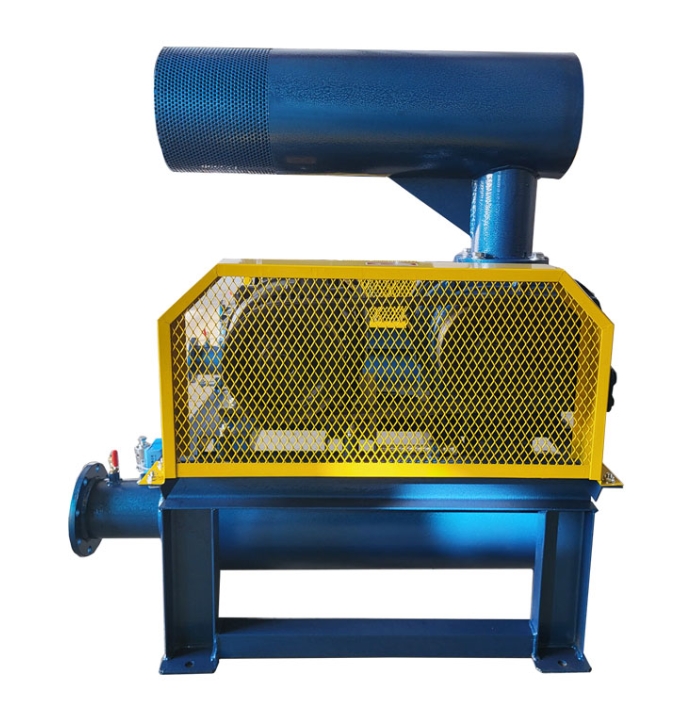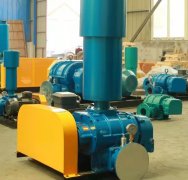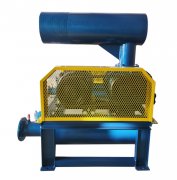Analysis of Energy Efficiency Grades for Roots Blowers
As an important industrial equipment, the energy efficiency level of Roots blower is directly related to operating costs and energy consumption. Understanding the energy efficiency characteristics and evaluation standards of equipment is of great guiding significance for users to choose energy-saving products.
Energy Efficiency Evaluation System
At present, the energy efficiency evaluation of Roots blowers mainly refers to relevant industry standards and national standards. These standards evaluate the energy efficiency level by assessing the unit gas consumption of the equipment under rated operating conditions. The evaluation system usually divides energy efficiency into multiple levels, where represents the energy efficiency level, the second level is the energy-saving evaluation value, and the third level is the threshold for market access.
Energy efficiency testing needs to be conducted under standard operating conditions, including specified intake conditions, working pressure, and speed. The test results can objectively reflect the actual energy efficiency performance of the equipment. When referring to energy efficiency levels, users need to pay attention to the corresponding testing conditions to ensure that they match the actual operating conditions.
Key factors affecting energy efficiency
The design level of equipment is the basis for determining energy efficiency. The optimized design of rotor profile can reduce internal leakage and improve volumetric efficiency. The reasonable layout of the flow channel structure can reduce pressure loss. Improvements in the transmission system can reduce energy transfer losses. These design factors collectively determine the theoretical energy efficiency level of the equipment.
The manufacturing process also affects energy efficiency performance. Precise machining accuracy ensures effective control of rotor clearance. High quality dynamic balance correction reduces additional energy consumption. Excellent assembly quality ensures coordinated operation of all components. These process details have a significant impact on energy efficiency.
Energy-saving technology
Modern Roots blowers adopt multiple energy-saving technologies. The design of the ternary flow rotor makes the airflow smoother and reduces vortex losses. The intelligent control system automatically adjusts operating parameters based on load changes to avoid unnecessary energy consumption. The application of motors significantly improves the efficiency of electrical energy conversion.
System matching optimization is also an important way to save energy. Ensure equipment operation in the area through precise selection. Adopting frequency conversion speed regulation to achieve on-demand gas supply. Optimize the pipeline system to reduce resistance losses. These measures can effectively improve the overall energy efficiency of the system.
Energy Efficiency Labeling and Certification
Legitimate Roots blower products usually provide energy efficiency testing reports. These reports are issued by qualified testing institutions and contain detailed energy efficiency testing data. Users can request to view relevant certification documents as a reference for decision-making when making purchases.
Some manufacturers also post energy efficiency labels on their products to visually display energy efficiency levels. This type of identification usually includes key information such as energy efficiency level and unit gas consumption. These labels provide convenience for users to choose products.
Energy saving benefit analysis
Choosing Roots blowers can bring significant energy-saving benefits. Taking a standard device as an example, increasing energy efficiency by one level can usually reduce energy consumption by 5-10. Considering the long-term continuous operation of the equipment, this energy-saving effect will generate considerable economic benefits.
In addition to direct electricity cost savings, equipment can also reduce the investment in supporting facilities. Due to the reduction in energy consumption, the demand for power supply line capacity has correspondingly decreased, and the load on the cooling system has also decreased. These indirect benefits further enhance the competitiveness of the equipment.
Selection suggestions
When purchasing Roots blowers, it is recommended to prioritize products with higher energy efficiency levels. Although the initial investment may be slightly higher, the long-term operating cost advantage is obvious. It is necessary to select based on specific operating conditions to ensure that the equipment operates in the designated area. Consider adopting energy-saving technologies such as frequency conversion control to further improve energy efficiency.
At the same time, attention should be paid to the authenticity of energy efficiency data. Choose a reputable manufacturer and request authoritative testing reports. Compare the performance curves of different products and select equipment with higher efficiency at common operating conditions. These measures help to select genuine products.
Maintenance and energy efficiency preservation
Regular maintenance is crucial for maintaining equipment energy efficiency. Adjust the rotor clearance in a timely manner to prevent efficiency decline due to wear and tear. Maintain the lubrication system in good working condition and reduce mechanical losses. Clean the heat exchange surface to ensure cooling effectiveness. These maintenance tasks can effectively maintain the energy efficiency level of the equipment.
Establishing an energy efficiency monitoring system is also important. Regularly monitor equipment operating parameters and analyze trends in energy efficiency changes. Record energy consumption data and promptly detect anomalies. Prevent a decrease in energy efficiency levels through preventive maintenance.
In short, the energy efficiency level of Roots blowers is an important indicator for measuring equipment performance. By selecting products and strengthening operational management, significant energy-saving effects can be achieved. With the continuous improvement of energy efficiency standards and technological advancements, the energy efficiency level of Roots blowers will be further enhanced, creating greater value for users.



